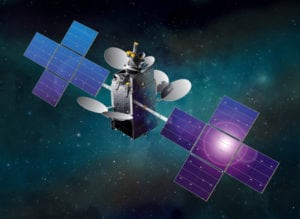Embratel Star One Sees Ka-Band as Boon in Brazil
[Via Satellite 06-15-2016] Gustavo Silbert, president of Brazillian satellite operator Embratel Star One, says the company is looking to the launch of its Star One D1 satellite to expand capacity for Direct-to-Home (DTH) and cellular backhaul in the region, as well as expand into the North American market. The company plans to launch the Ka-band satellite — its largest satellite to date — by the end of 2016, offering some much-needed relief to its satellite network.
Silbert told Via Satellite the company sees Ka-band as the “new band in the region,” which will greatly expand both traditional and new operations, including Ka-band consumer broadband access to the internet, which will likely grow satellite demand for Brazil in the next two years, in addition to DTH and cellular backhaul.
“The current use of Ka-band has been very limited in quantity, but will increase very fast with the new capacities that are planned to be deployed between now and by the end of 2017. This includes our Star One D1 satellite that will provide Ka-band services over Brazil. Our current model is to use Ka-band mainly for cellular backhaul and some video. The use for consumer broadband is still under evaluation.”
According to Silbert, video and cellular backhaul are the current drivers of satellite communications in Brazil, with the majority of Star One’s current revenue coming from video. To support the current level of cellular backhaul demand, the company is presently relying on some of its transponders from Star One C4 satellite, launched in 2015, as well as the collocated Star One C2 satellite. After 2019, however, much of the cellular backhaul will migrate to Star One D1, freeing up more transponders on these satellites to grow DTH operations in both Brazil and Central America. Claro Mobile Network started to use Star One’s Ku-band capacity for cellular backhaul this year and it has already announced plans to use the company’s Ka-band capacity to expand the service the Star One D1 satellite launches.
Once Star One D1 is launched, the company hopes to free up some capacity to move into the North American market as well.
“We have switchable capacity over North America in both Star One C4 and D1. As the needs of our current Brazilian, Central and South American customers have been very demanding, making us operate with high fill rates within our fleet, so far there has not been available capacity to switch to North America s we had done in the past. With the arrival of the new D1, however, we hope to initiate some operation there,” Silbert said.
For now, the company is gearing up to broadcast and host the 2016 Olympic Games in Rio de Janeiro, which are set to begin in early August. Embratel is one of four official telecom supporters for the 2016 Olympic Games, along with Claro, Net, and America Movil Group. While Silbert told Via Satellite the telecom supporters had a “good rehearsal” with the World Cup in 2014, the telecom infrastructure has become much more complex than it was at the time of the world cup. Alongside its telecom cohorts, the company has been busy readying the infrastructure required for the mega event, which includes deploying and operating datacenters as well as equipping several venues with a “high quality and secure telecom network.”
The telecommunication base of Rio 2016 will be the Backbone Olímpico Embratel, a modern network with 370 kilometers of optical fiber, triply redundant, to guarantee the high transmission availability of games data. The Olympic network will have the capacity of 40 gigabytes per second, connecting more than 60,000 access points spread in more than 100 venues, including places of competition and non-competition related to the event. Aside from the preparation necessary to host and broadcast the event, Embratel’s data centers are also responsible for hosting the ticket sales website, which the country estimates will see 8 million tickets sold through the online platform.
Silbert originally told Via Satellite that the Olympic games would usher in a new era of 4K into Latin America, and while Star One is ready to transmit 4K and 8K within Central and South America, it is thus far on a limited basis.
“For sure the Olympics will confirm the use of 4K, but it will be o a limited basis. There will be some 4K transmissions,” said Silbert. “There will also be 8K transmissions, but in this case they will be sent to Japan as part of an experiment with them.”
After the Olympic games, however, the executive notes that oversupply and Brazil’s current economic downturn could pose an issue for the operator, should the recession persist.
“We have been noting a certain oversupply taking place in Latin America. Together with some devaluation of local currency in relation to the dollar, this may bring a combination that may cause a mismatch in the business for some players,” Silbert said.
While Silbert says the company could see an impact providing the economic situation doesn’t buoy back shortly, he hasn’t expressed any reservations about the viability of the satellite market in the region, even if the issue persists.
“Even if a slowdown occurs in the demand, there is a market [in Brazil] to be served. There are still thousands of unattended areas that need telecom infrastructure,” he noted.
